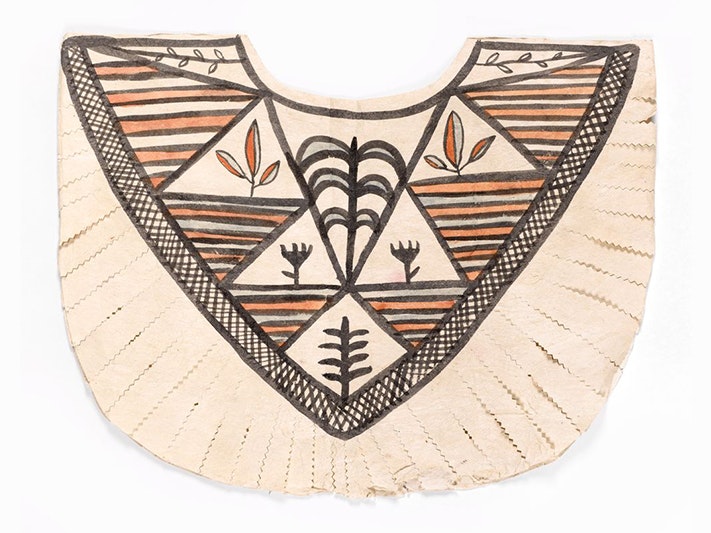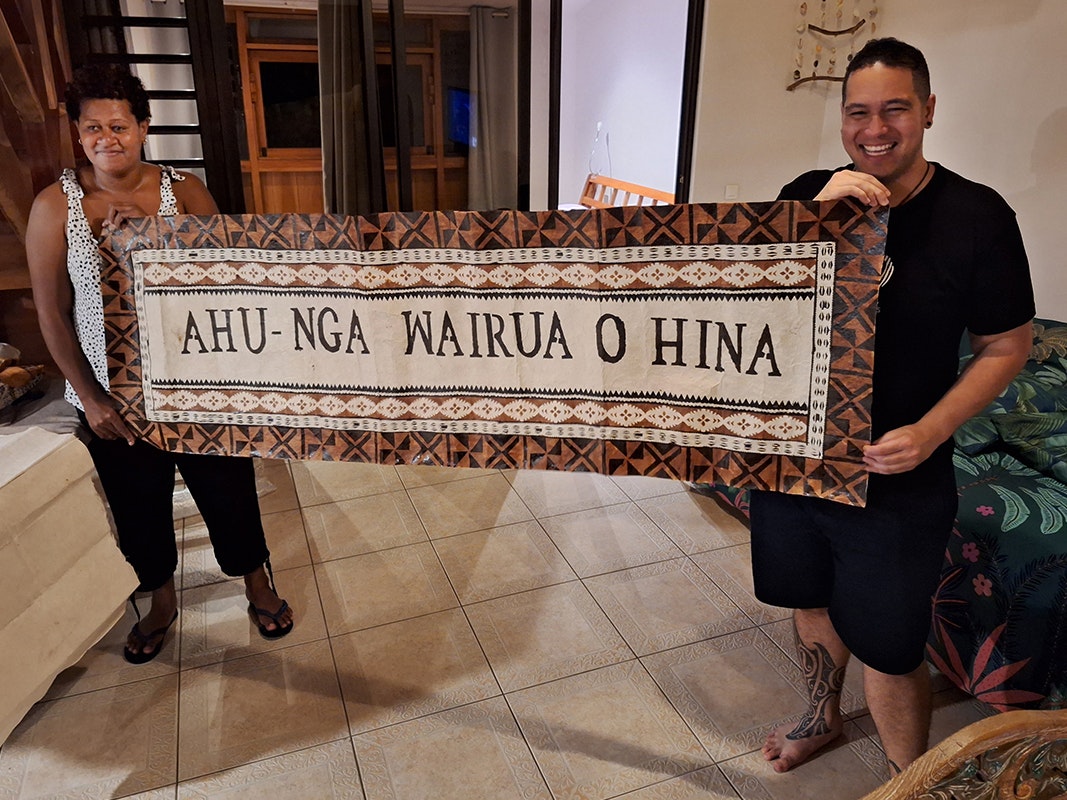
Watch: Hinatea Colombani at the ‘Ahu: Ngā Wairua o Hina wānanga
Watch Tahitian tapaartist Hinatea Colombani talk about her work as a tapa maker and artist.
“...the colonialism, the Christianism also had a hard impact on culture here, and on our history and identity. . . During our journey in tapa. . . we didn't have access to this plant because you know, when we change our customs, when we forget our customs, we forget to plant it also. We need to plant this aute, to link us to the past, to link us to the present, to anchor us in this present period.”
As a dance teacher, Hinatea Colombani knew she was missing part of herself. She eventually understood that missing piece was tapa and has been learning and teaching the ways of tapa making in order to bring the practice back to the people of Tahiti.
Through learning about growing the trees for tapa use, and teaching how to make tapa, Hinatea’s mission now is to guide the new generations to link them to their history.
Watch Hinatea Colombani talking about her Tahitian tapa practice and what it means to her at the 2023 ‘Ahu: Ngā Wairua o Hina talanoa in Tahiti.
‘Ahu: Ngā Wairua o Hina
In 2021, Te Papa acquired a rare book containing tapacloth samples, cut from larger pieces collected during Captain Cook’s Pacific voyages in 1768, 1772, and 1776, and compiled by Alexander Shaw in 1787. The samples represent tapa-making practices from various islands including Hawai‘i, Tahiti and Tonga.
In 2023, in Tahiti, ‘Ahu: Ngā Wairua o Hina gathered tapa makers of Tongan, Sāmoan, Niuean, Fijian, Hawaiian, Tahitian, Pitcairn-Norfolk Island, and Māori descent for five days to learn about and re-establish their living relationships to the cloth held within Alexander Shaw’s book.
Through a process of wānanga this group of makers created two tapa bundles, incorporating the ideas of past, present, and future – one of the bundles is with Te Papa and the other with Te Fare Iamanaha-Musée de Tahiti et des Îles.
You might also like


‘Ahu: Ngā wairua o Hina – Tapa workshops in Tahiti
After acquiring a book of tapa samplers collected by Alexander Shaw that represents tapa-making practices from various islands in the Pacific, tapa makers, Te Papa curators, and our Senior Librarian, gathered together in Tahiti for a wānanga (workshop) to explore and respond to the samplers in the book.

Hiapo: Niuean tapa cloth
Hiapo is made from the bark of the paper mulberry tree. Little is known of pre-nineteenth-century forms of Niuean cloth, but we do know that in the 1830s, Sāmoan methods of making siapo or tapa barkcloth were introduced to Niue by Sāmoan missionaries.